Today's Tidbit... A 1940 Riddell Brochure
This morning, I found a fun 6-page Riddell brochure from October 1940 in the mailbox. I'll review the pages in order other than page 2 since I'm saving the best for last.
You wouldn't think a company building a broader product line would have cleats on page 1 of their brochure, but Riddell's first products were football and track cleats, and it appears they did not want to stray too far from home.
The special notice to coaches is interesting since it tells coaches to look for the Riddell name perforated into the top of the shoe tongues. Of course, this was before brand logos dominated shoe styling, and football shoes came in colors other than black.
Riddell also sold balls for several sports and shoes for football, basketball, bowling, boxing, and wrestling. Each shoe for these sports had leather uppers and some form of rubber sole, some of which could be resoled. When was that time you took your basketball shoes in to be resoled? Also worth noting is that the balls sported the Riddell logo, but the shoes did not.
Track, baseball, softball, and football shoes were a significant part of the product line, so Riddell’s primary positioning in the sporting goods market was shoes and cleats.
Riddell was a Chicago-based firm, a common location for sporting goods manufacturers due to the stockyards and leather industry on the South Side, so it makes sense that the balls and shoes in the catalog were mainly made of leather. But the most important product in the catalog was on page 2, the football helmets Riddell tinkered with in 1939 and introduced to the market in 1940. They were made of plastic.
As described in a 2023 Tidbit based on a Syracuse ticket brochure for the first football game where a team wore plastic helmets, the visiting Northwestern Wildcats were the primary team to wear plastic helmets that season, though I've found scattered reports that others wore them.
Riddell clearly hoped to sell the plastic helmets more widely since they offered the shells in 18 colors, the top strap in 10, and five solid colors. (The Tenite plastic used to make the helmets was transparent. Riddell added color by painting the inside of the helmet or strap, not the outside.)
Riddell’s center stripe had styling value, but the center stripe had a functional purpose. Riddell's manufacturing process molded left and right halves that were produced separately; the center strap helped hold the two pieces together. Since the top straps needed to be there anyway, allowing teams to add a center stripe of a different color was marketing gold. More fundamental than that, these were the first helmets I know of shipped from the factory in team colors. All previous leather helmets were shipped in shades of brown, and the manufacturers sold paint that equipment managers used to customize their team’s lids.
So, in addition to selling the first plastic helmets, Riddell also helped boost the popularity of colored helmets and the single stripe down the center of the helmet.
Football Archaeology is reader-supported. Click here to buy one of my books or otherwise support the site.


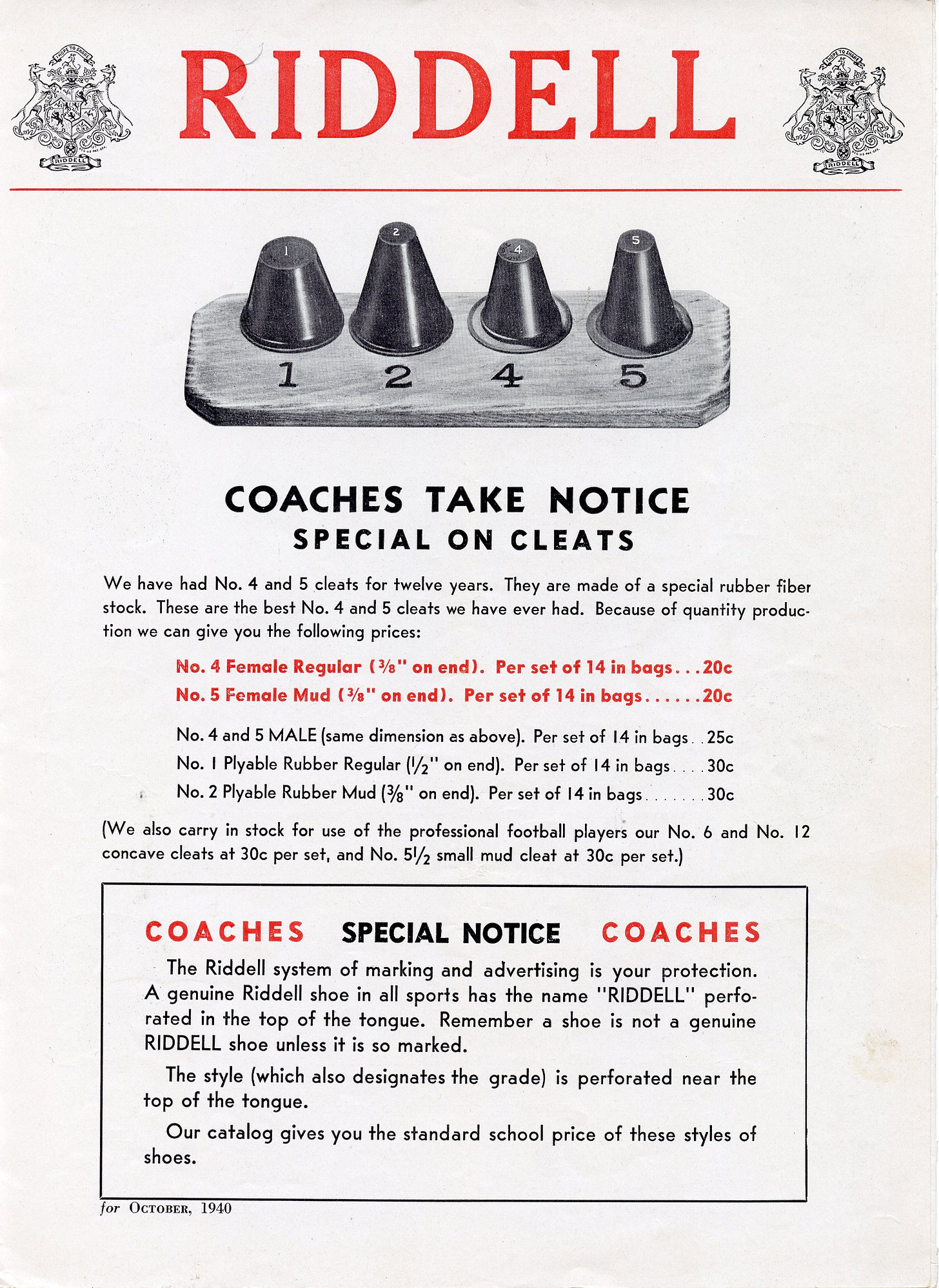
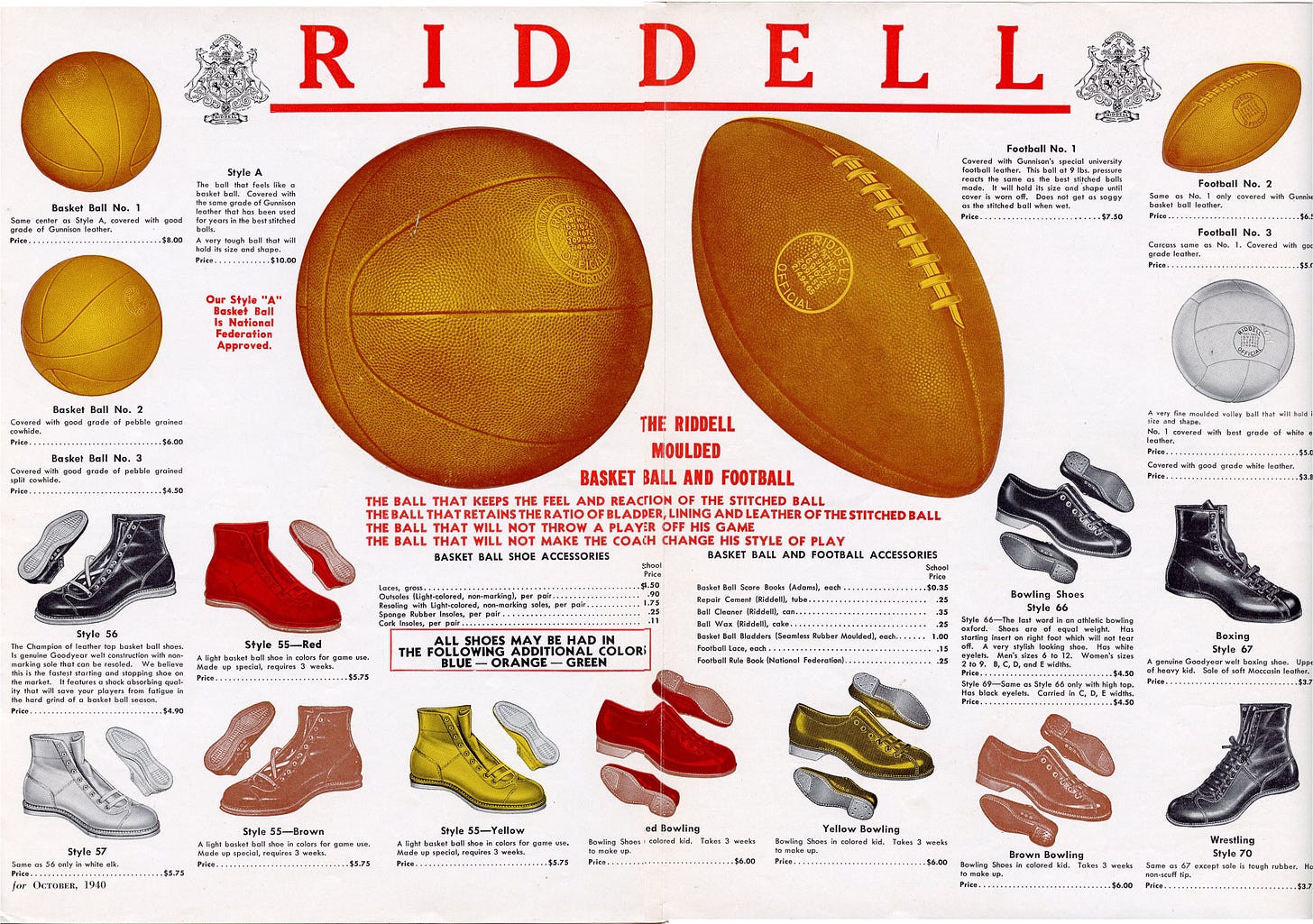
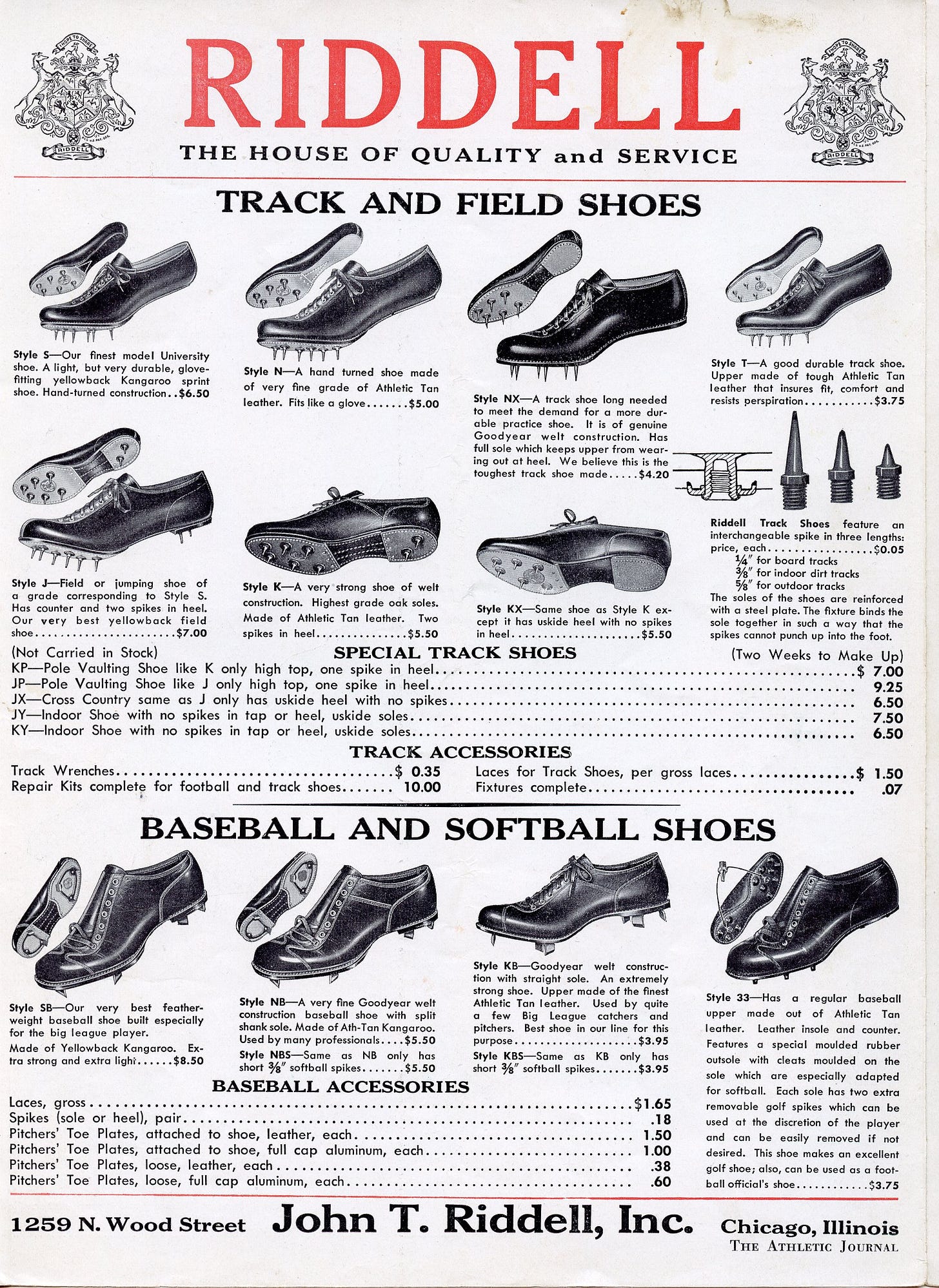
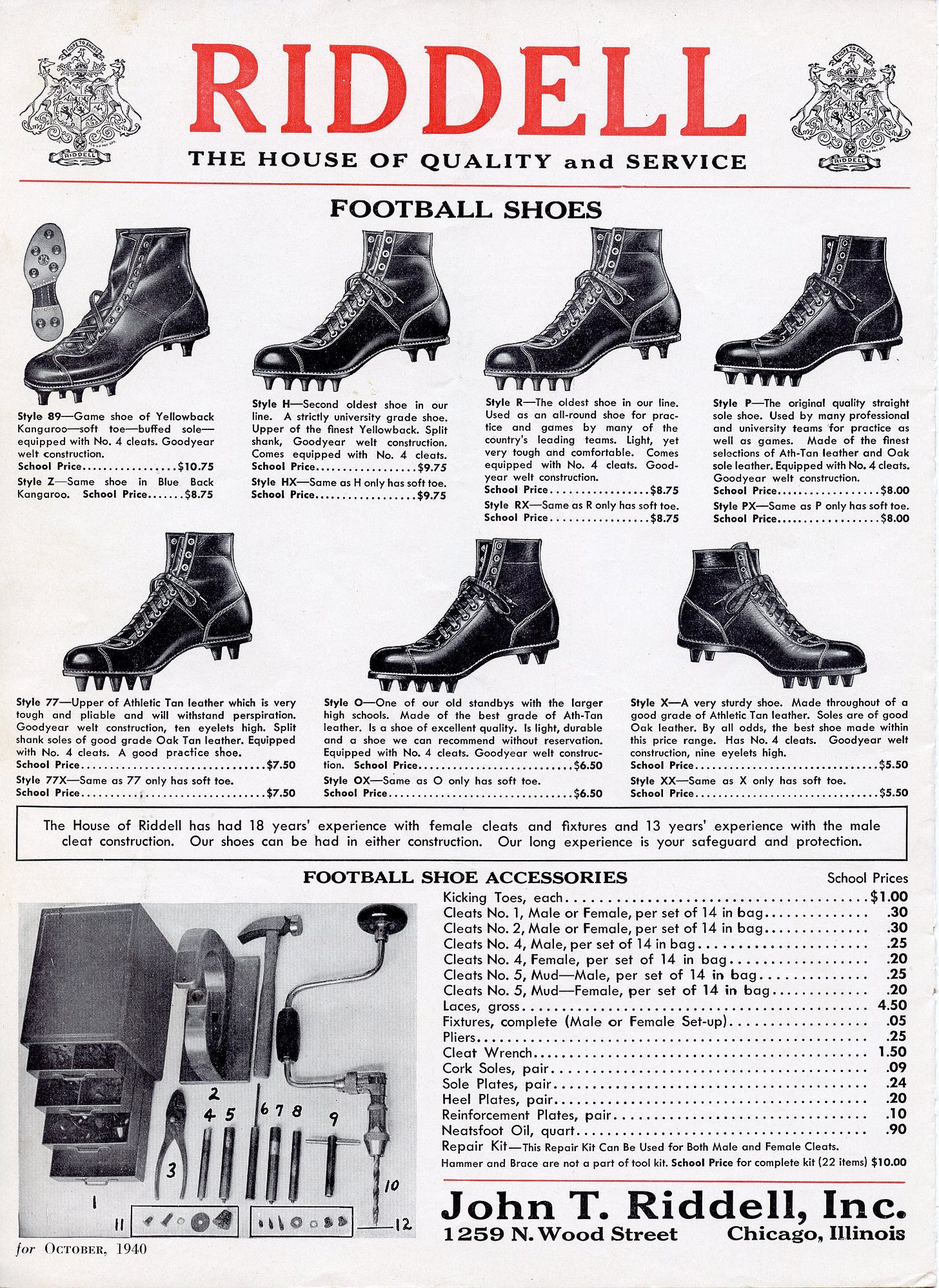
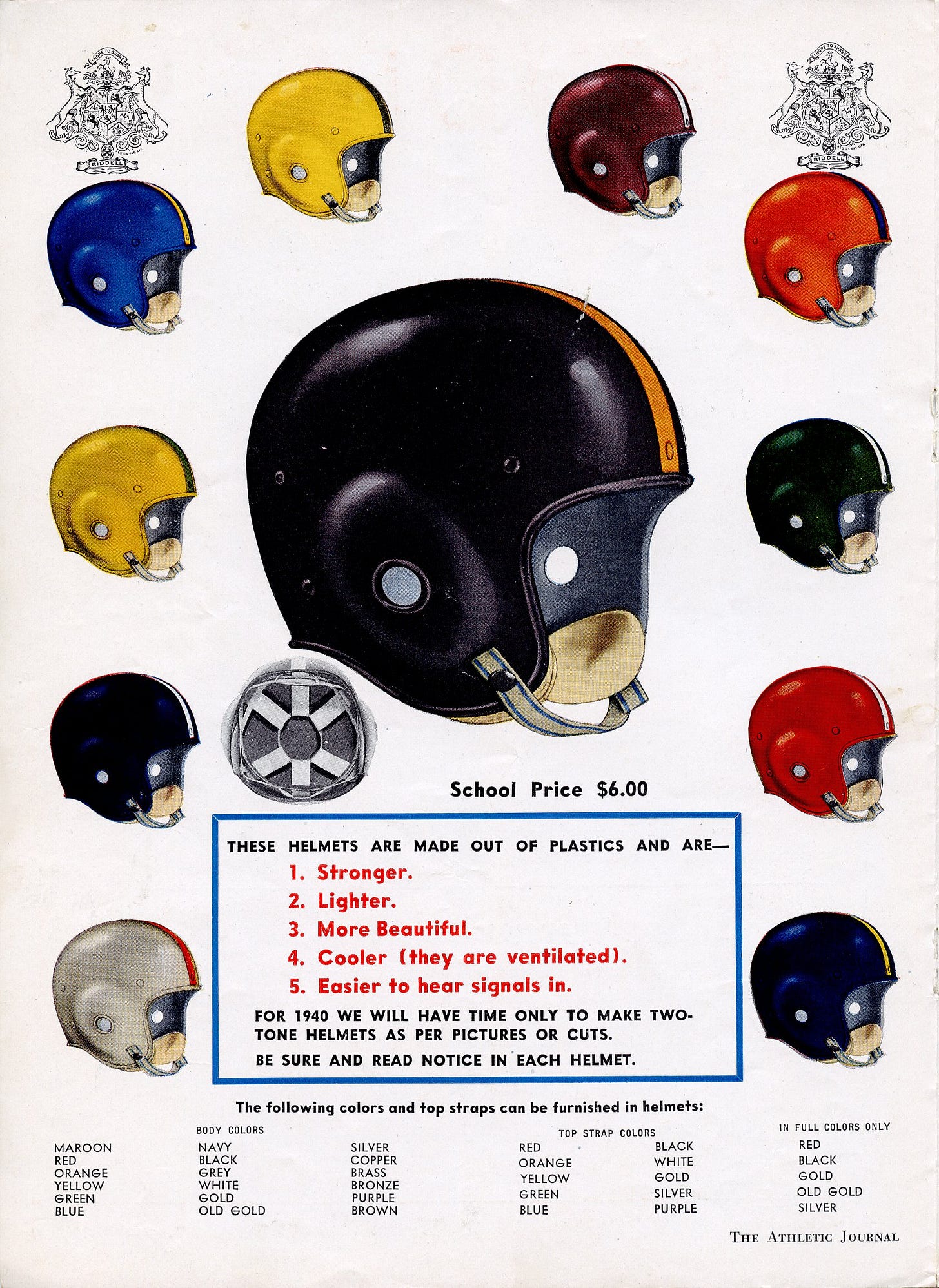
Never thought about the proximity to Chicago’s stockyards being a factor in the manufacturing locations of leather shoes and goods…excellent point.
I remember you once mentioned white and even yellow colored footballs. I've found some images of old white footballs but am curious as to how bright the yellow balls were? Are there any catalogs that have them? Was it as dull as an orange basketball or as bright as a green tennis ball?